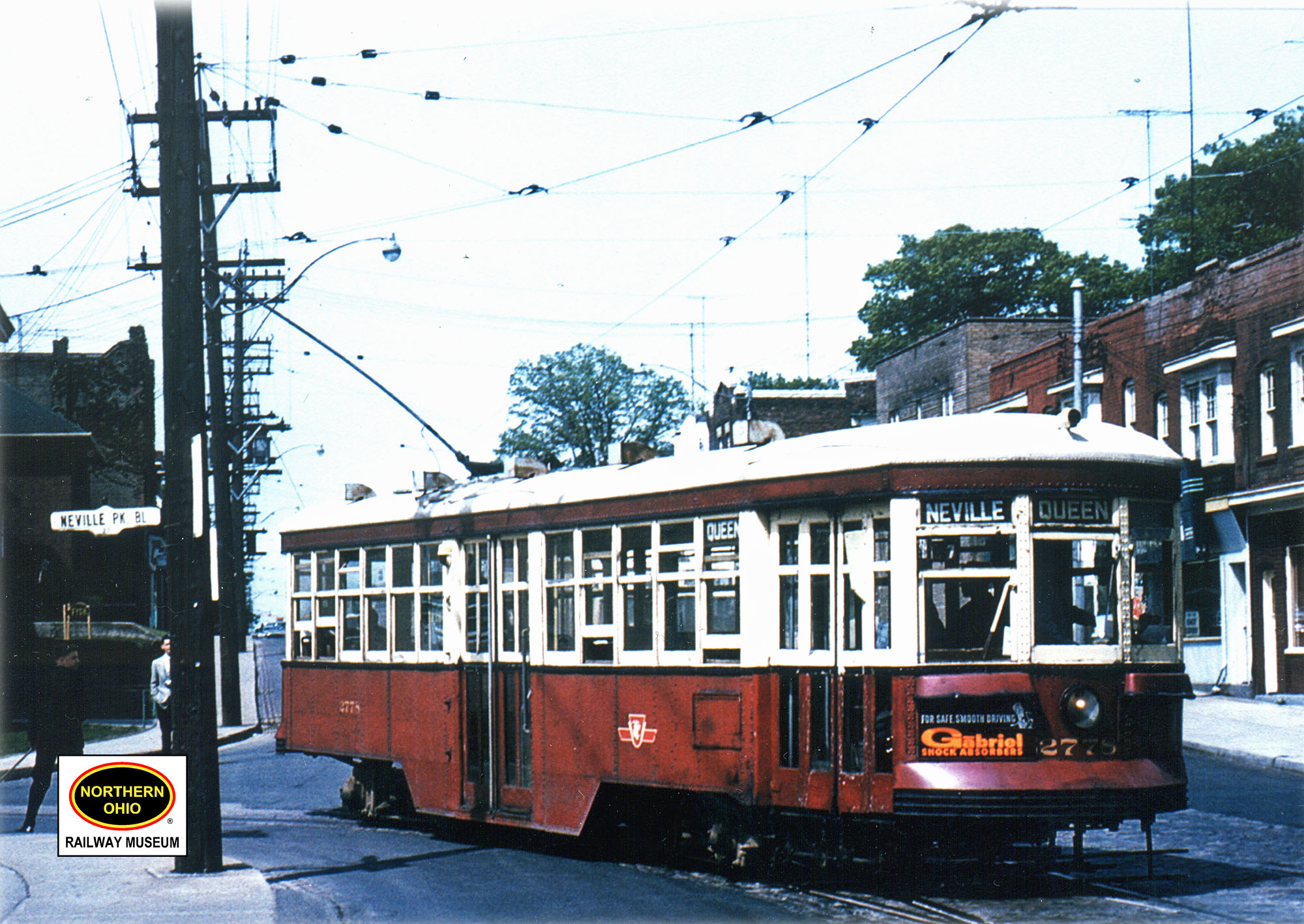Car 2778 is a style of streetcar known as a Peter Witt. Streetcars built prior to this style had doors in various locations on the carbody. Some cars were configured with doors at the front, some with doors in the back and some with doors in the center. Each of these designs made you wait to board until you passed the Conductor. This made for lengthy loading and unloading times of passengers. Cleveland Traction Commissioner Peter Witt had a better idea. He designed a car with a front entrance door and center exit door. Riders could load up rapidly through the front door and drop their fares in the fare box as they passed the conductor in the center of the car. This “pay as you pass” system spread throughout the world and became known as the Peter Witt car. Peter Witt was appointed Cleveland’s Street Railroad Commissioner in 1912 by newly elected mayor Newton D. Baker
The Cleveland Railway Company’s center-door streetcars were the newest cars on the system at the time. To improve the speed of loading he added a large entrance doorway at the front by the motorman. Patrons could then ride in the front of the car (configured for maximum standing room), and leave through the first center door, or they could pass through to the rear (where most of the seats were), exiting via the second center door. Either way, riders paid as they passed the fare box at the conductor’s station, which was relocated from between the center doors to just ahead of them. This “Pay As You Pass” system eliminated time formerly lost at stops collecting each fare under the old “Pay As You Enter” system.
The car was introduced to the public as the Car Rider’s Car in the Spring of 1915. The double center doors of the converted car were replaced by a single large doorway on later cars of this type. These innovations improved the ability of public transit to better serve the masses by reducing both ride times and traffic congestion. The car exceeded even Mitten’s innovations and thousands were built for use all over the world. A commission of $50.00 per car was paid to Witt by other transit systems that used his design.
Toronto Transportation Commission Peter Witt Car 2778 was built by the Canadian Car & Foundry Company in 1923. Toronto, Ontario, operated two series of Peter Witts. The smaller of the two, like 2778, was almost identical to a Cleveland Peter Witt. Humorists nicknamed them Half-Witts! Because no Cleveland Witt cars have survived, this car is as close as we can come to documenting this vital step in Cleveland’s transit history.
This car was acquired by the Museum to represent a type of car that was no longer in existence from the local transit operator.
| Builder | Canadian Car and Foundry |
| Type | Electric Street Car |
| Description | Single End Double Truck Arch Roof Peter Witt |
| Year Built | 1923 |
| Retired | 1963 |
| Acquired | 1969 |
| Seats | 52 |
| Length | 47′ |
| Width | 8′ 4″ |
| Height | 10′ 11″ |
| Weight | 39,700 |
| Trucks | CC&F 177 |
| Motors | (4) WH 510A, 35hp |
| Control | WH K35XA |
| Brakes | WAB SME |
| Compressor | DH 16 |

